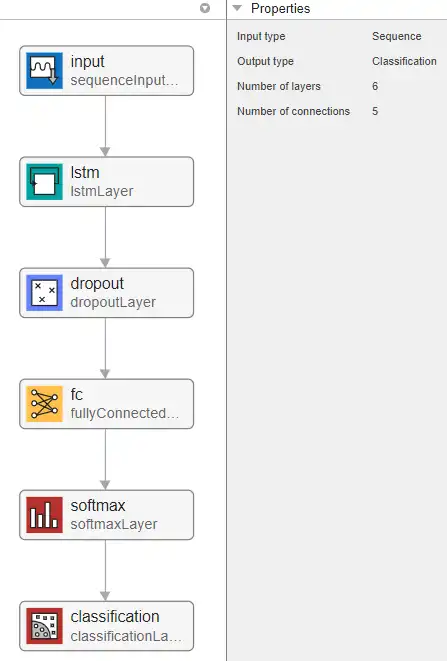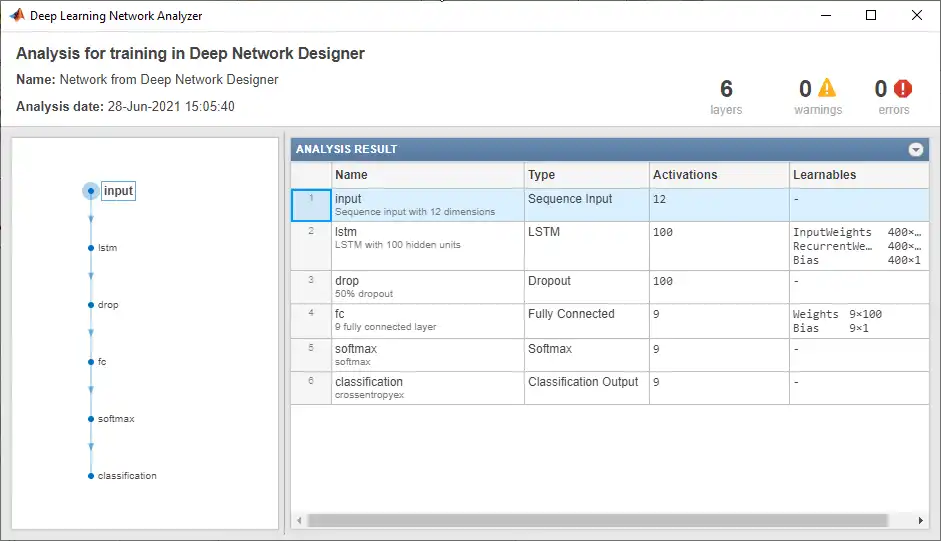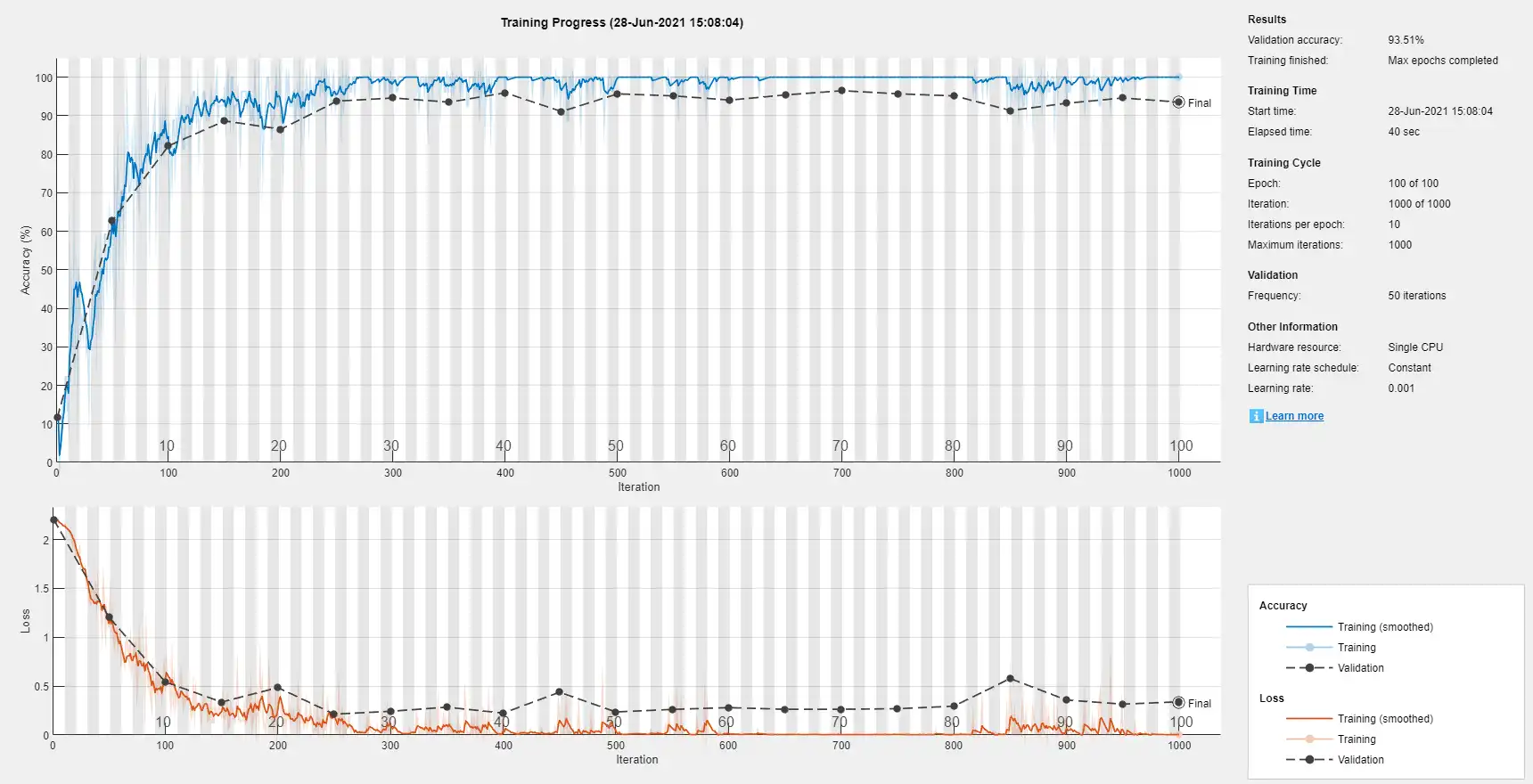This example shows how to create a simple long short-term memory (LSTM) classification network using Deep Network Designer.
To train a deep neural network to classify sequence data, you can use an LSTM network. An LSTM network is a type of recurrent neural network (RNN) that learns long-term dependencies between time steps of sequence data.
The example demonstrates how to:
-
Load sequence data.
-
Construct the network architecture.
-
Specify training options.
-
Train the network.
-
Predict the labels of new data and calculate the classification accuracy.
Load Data
Load the Japanese Vowels data set, as described in [1] and [2]. The predictors are cell arrays containing sequences of varying length with a feature dimension of 12. The labels are categorical vectors of labels 1,2,...,9.
[XTrain,YTrain] = japaneseVowelsTrainData; [XValidation,YValidation] = japaneseVowelsTestData;
View the sizes of the first few training sequences. The sequences are matrices with 12 rows (one row for each feature) and a varying number of columns (one column for each time step).
XTrain(1:5)
ans=5×1 cell array
{12×20 double}
{12×26 double}
{12×22 double}
{12×20 double}
{12×21 double}
Define Network Architecture
Open Deep Network Designer.
deepNetworkDesigner
Pause on Sequence-to-Label and click Open. This opens a prebuilt network suitable for sequence classification problems.

Deep Network Designer displays the prebuilt network.

You can easily adapt this sequence network for the Japanese Vowels data set.
Select sequenceInputLayer and check that InputSize is set to 12 to match the feature dimension.

Select lstmLayer and set NumHiddenUnits to 100.

Select fullyConnectedLayer and check that OutputSize is set to 9, the number of classes.

Check Network Architecture
To check the network and examine more details of the layers, click Analyze.

Export Network Architecture
To export the network architecture to the workspace, on the Designer tab, click Export. Deep Network Designer saves the network as the variable layers_1.
You can also generate code to construct the network architecture by selecting Export > Generate Code.
Train Network
Specify the training options and train the network.
Because the mini-batches are small with short sequences, the CPU is better suited for training. Set 'ExecutionEnvironment' to 'cpu'. To train on a GPU, if available, set 'ExecutionEnvironment' to 'auto' (the default value).
miniBatchSize = 27;
options = trainingOptions('adam', ...
'ExecutionEnvironment','cpu', ...
'MaxEpochs',100, ...
'MiniBatchSize',miniBatchSize, ...
'ValidationData',{XValidation,YValidation}, ...
'GradientThreshold',2, ...
'Shuffle','every-epoch', ...
'Verbose',false, ...
'Plots','training-progress');
Train the network.
net = trainNetwork(XTrain,YTrain,layers_1,options);

You can also train this network using Deep Network Designer and datastore objects. For an example showing how to train a sequence-to-sequence regression network in Deep Network Designer.
Test Network
Classify the test data and calculate the classification accuracy. Specify the same mini-batch size as for training.
YPred = classify(net,XValidation,'MiniBatchSize',miniBatchSize); acc = mean(YPred == YValidation)
acc = 0.9405
For next steps, you can try improving the accuracy by using bidirectional LSTM (BiLSTM) layers or by creating a deeper network.